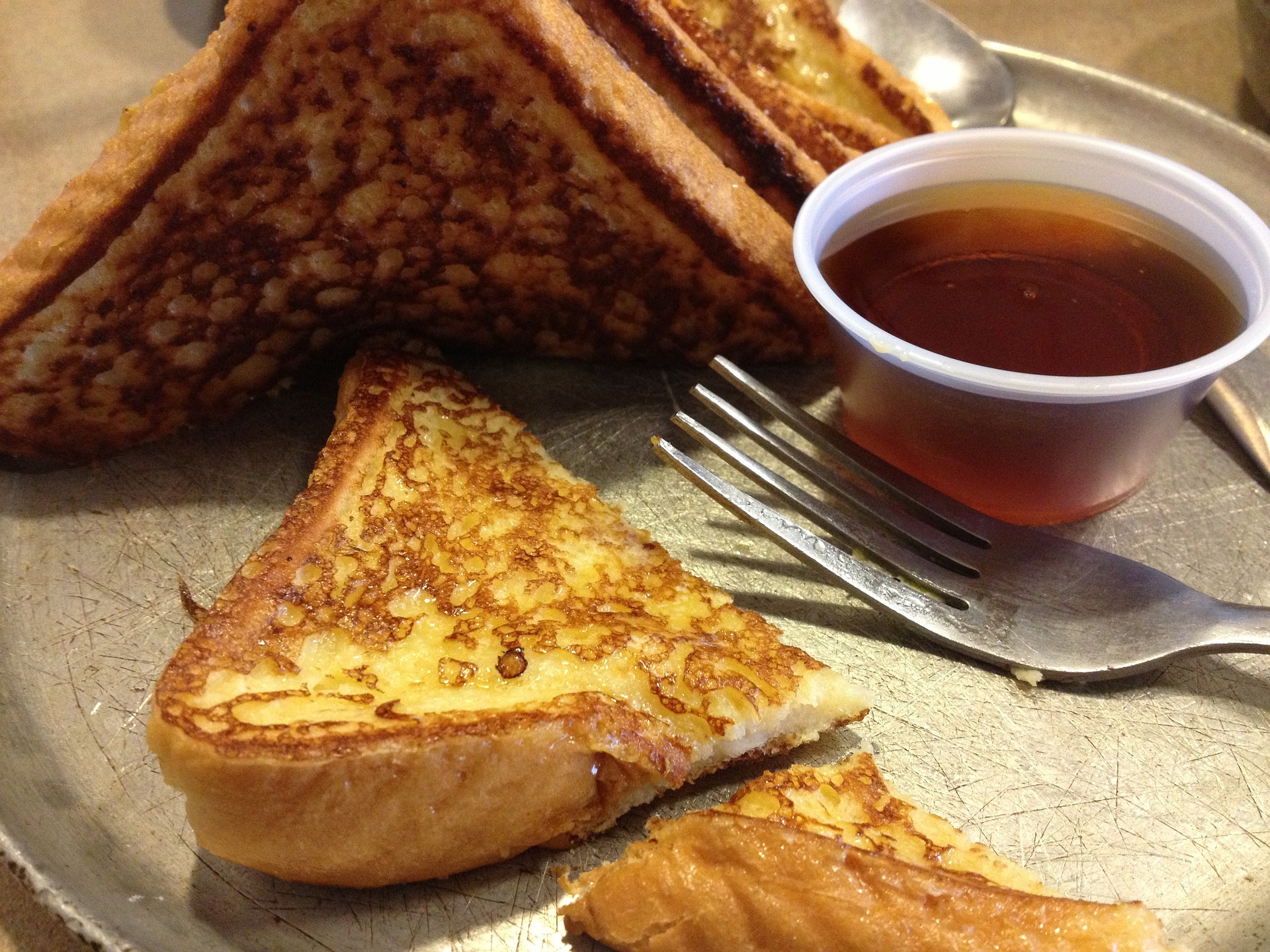Is it French? No. It is not.
But, my good old hometown Albany, New York does play a part in the history of French toast.
Definition: Bread usually dipped in a batter of egg and milk and sauteed until brown, usually served with syrup or sprinkled sugar and cinnamon.
Over the centuries, French toast has been called everything from Spanish toast to egg toast to Nun’s toast.
Like many other foods, French toast can be traced back to the Ancient Romans. They would soak bread in milk (sometimes egg) and fry it in oil or butter. French toast was consumed by peasants throughout Europe as a way to make stale bread an eatable food item.
However, our featured food was not just enjoyed by the poor, but by the very wealthy as well. FoodTimeline.org indicates that recipes printed in ancient and medieval texts called for white bread (very expensive at the time). And, additional ingredients were often pricey and extravagant as well, such as cinnamon.
Also, at that time, not everyone could read. Cookbooks were created for those elite who could, once again signifying that recipes found in ancient cookbooks were probably geared towards the literate, well-to-do folks.
In the 1400s during the reign of Henry V, a version of French toast called pain perdu, or lost bread, was popular in the culinary world. It was called “lost bread,” possibly as a reference to saving bread that would otherwise be discarded as too stale.
Although it hasn’t been proven, there is a legend that an Albany, New York innkeeper, Joseph French, is credited with naming French toast – by accident.
Reportedly, he served French toast in 1724. He advertised the dish as “French toast” because he did not include the appropriate apostrophe to title it, “French’s toast.”
I was kind of hoping French Stewart invented them.
Today, French toast remains a popular food item for breakfast or as a dessert.
As the history indicates, French toast is suitable for a whole range of people – from the wealthy, to the not-so-wealthy; it can be basic, or fancied up to tailor a more elaborate or sophisticated palate.
